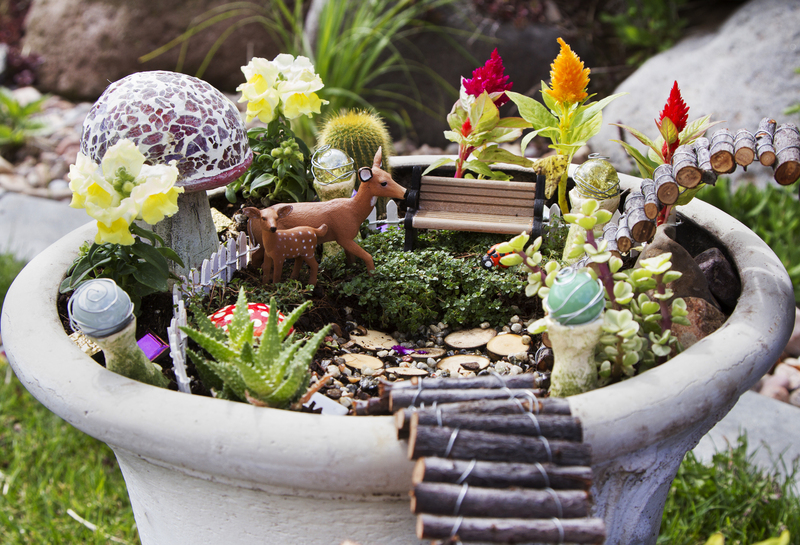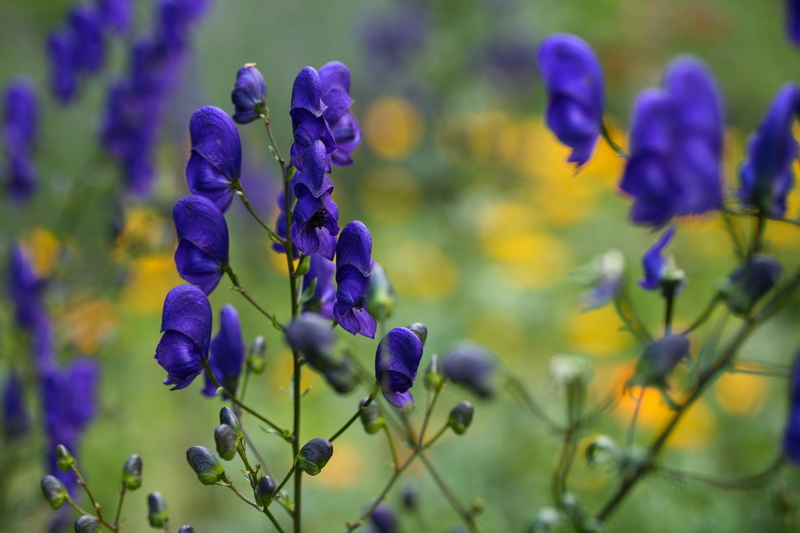The Guide to Vibrant Orchid Care
Posted on 22/05/2025
The Guide to Vibrant Orchid Care
Orchids are among the most enchanting and diverse plant families worldwide. Their striking beauty and unique forms make them a favorite among houseplant enthusiasts and garden lovers alike. However, many believe that caring for orchids is difficult, yet successful orchid care simply requires understanding their needs and providing the right environment. This comprehensive guide covers all aspects of vibrant orchid care, offering actionable tips and insights to ensure your orchid blooms with vitality.
Understanding Orchids: Insights Into Their Unique Appeal
Orchids, belonging to the family Orchidaceae, boast over 25,000 species--more than any other plant family. Their adaptability to various environments, from rainforests to arid deserts, is a testament to their resilience. Yet, most popular orchids for home cultivation like Phalaenopsis (Moth Orchid), Cattleya, Dendrobium, and Oncidium have specific requirements for flourishing indoors.
Why Orchids Fascinate Growers
- Long-lasting blooms: Many orchid varieties produce flowers that remain vibrant for weeks or even months.
- Exotic appearance: Their unusual shapes and colors captivate the eye.
- Wide variety: Suitable species for beginners and experts alike.
- Air purification: Orchids contribute to improved indoor air quality.
Understanding these distinctive traits is the foundation of vibrant orchid care.

Choosing the Right Orchid for Your Home
Selecting the best orchid variety is essential for successful care, especially for new orchid growers. Different orchids have varying needs in terms of light, humidity, and temperature. Let's examine some common orchids recommended for home environments:
Popular Home Orchid Varieties
- Phalaenopsis: Also known as the Moth Orchid, known for its ease of care and frequent, resilient blooms.
- Cattleya: Famously called the "Queen of Orchids," producing large, fragrant flowers.
- Dendrobium: Vibrant, elegant, and adaptable to a range of indoor conditions.
- Oncidium: Nicknamed "Dancing Ladies" thanks to their distinctive flower shape.
It's best to start with a hardy type like Phalaenopsis if you're new to caring for orchids.
Key Elements of Vibrant Orchid Care
To foster healthy, blooming orchids, focusing on these core elements is vital:
- Light requirements (intensity and duration)
- Watering techniques
- Humidity and airflow
- Appropriate potting media and containers
- Fertilization routines
- Repotting procedures
- Date and method of pruning
- Common orchid pests and diseases
Providing the Right Lighting
Orchids thrive best in bright, indirect light. Most household orchids, like Phalaenopsis, dislike direct sunlight, which can lead to scorched leaves. The ideal spot is a north- or east-facing window, filtered through a sheer curtain if necessary.
- Test the lighting level by placing your hand near the plant: a soft shadow is ideal.
- For south- or west-facing windows, use blinds or sheer curtains to diffuse the intensity.
- Telltale signs of insufficient light include dark green leaves and sluggish or absent flowering.
- Too much sunlight causes yellowing or scorched foliage.
If you don't have naturally bright lighting conditions, full-spectrum LED grow lights are excellent alternatives.
Mastering Watering for Vibrant Orchids
Proper watering is among the most commonly misunderstood aspects of orchid care. Overwatering can lead to fatal root rot, while underwatering may cause the loss of buds and shriveling.
- Most orchids prefer to almost dry out between waterings.
- Use pots with good drainage: standing water is the enemy of orchid roots.
- Water once a week in cooler months, and possibly twice during growing seasons, depending on indoor humidity.
- Water thoroughly, but let excess drain completely.
- If your orchid's potting mix feels dry an inch below the surface, it's time to water.
Tip: Use tepid water and avoid watering orchid foliage or flowers directly, as this can encourage fungal growth.
Humidity and Air Circulation
Orchids thrive in moist environments, with a preferred relative humidity of 40-70%. Achieving this indoors is simple with a few effective strategies:
- Set the orchid pot on a tray filled with pebbles and water (water shouldn't touch the bottom of the pot) to raise local humidity.
- Mist the leaves (not flowers) occasionally, especially during dry winter months.
- Use a smart humidifier if ambient levels are low.
- Maintain gentle air circulation with a small fan to prevent fungal problems, especially if you increase humidity.
Choosing the Best Orchid Potting Media and Containers
Unlike typical houseplants, orchids need specialty potting mixes. Their roots prefer:
- Excellent aeration
- Rapid drainage
- Low soil compaction
Typical orchid mix comprises fir bark, sphagnum moss, perlite, and sometimes coconut husk or charcoal. Choose a transparent plastic pot for Phalaenopsis--roots perform photosynthesis!
Repot every 18-24 months to refresh the media and check root health.
Orchid Fertilization: Feeding for Blooms
Orchids, though not heavy feeders, benefit from regular yet diluted fertilizing routines:
- Use a balanced orchid fertilizer (such as 20-20-20); dilute to 1/4 strength.
- Apply every 2-4 weeks during active growth (usually spring and summer).
- Reduce or pause feeding during winter dormancy.
Remember the famous rule: "weakly, weekly"--less is more for orchid feeding!
Repotting Orchids
Strong, vibrant orchids outgrow their pots or exhaust their media. Repotting encourages renewed growth:
- Best repotting time: just after flowering cycle ends.
- Remove old media, trim dead roots, and reinstall in fresh orchid mix.
- Choose a pot only slightly larger than the old one.
*New roots appearing just before repotting is a sign of optimal timing.
Orchid Care Through the Seasons
Adapting orchid care routines according to seasonal changes is crucial for lush, continual blooms.
Spring and Summer Orchid Care
- Increased light encourages new growth; ensure gradual adaptation to avoid burning.
- Boost watering frequency as the plant actively grows.
- Fertilize lightly but regularly.
Autumn and Winter Orchid Care
- Reduce watering frequency; check roots and pot dryness before each watering.
- Feed less or not at all if growth slows or stops.
- Guard against chilling drafts, but allow night-time coolness for spike initiation (especially in Phalaenopsis).
Encouraging Orchids to Re-Bloom
With patience and optimal conditions, most household orchid varieties will rebloom. Tips for stimulating orchid blooms:
- After flowers drop, leave the green flower spike but prune just above a visible node or "eye."
- Increase nighttime temperature difference by a few degrees during autumn.
- Maintain high, indirect light and avoid overfertilizing.
It's natural for some varieties to rest for months before producing another flush of flowers. Patience is key!
Common Orchid Problems and How to Solve Them
Even with the best care, orchids may encounter issues. Spot problems early with these indicators and solutions:
- Yellow leaves: Often from overwatering or poor drainage. Allow media to dry and ensure proper pot vents.
- Wrinkled, limp leaves: Underwatering or root loss may be the cause. Adjust watering and inspect roots.
- Brown leaf tips: Sign of low humidity or excessive fertilizer. Improve humidity and flush the pot with water to remove excess salts.
- No flowers: Insufficient light or over-nourishment. Move to brighter spot and cut back fertilizing.
Dealing with Orchid Pests and Diseases
Some common orchid problems include:
- Mealybugs
- Spider mites
- Scale insects
- Fungal and bacterial rots
- Wipe affected areas with cotton swabs dipped in isopropyl alcohol.
- Isolate infested orchids from others.
- Improve airflow to discourage fungus.
- Remove and discard severely damaged tissue.
Expert Orchid Care Tips for Stunning Blooms
Boost your orchid-growing success with these vital tips:
- Observe regularly: Catch issues early by inspecting leaves, roots, and flowers every week.
- Resist over-helping: Orchids thrive on some benign neglect. Overwatering and overfeeding do more harm than good.
- Rotate plants: Gradually turn your orchid every week to promote even growth and prevent leaning.
- Label clearly: Record the species and care tips for each plant to avoid confusion.

Frequently Asked Questions About Orchid Care
Q: How often should I water my orchid?
A: Water once the potting media is nearly dry, typically every 7-10 days. The frequency depends on humidity, media, and location.
Q: Why are my orchid leaves turning yellow?
A: Common causes are overwatering, insufficient light, or aging leaves. Examine roots and lighting to pinpoint the problem.
Q: How do I get my orchid to bloom again?
A: Provide enough indirect light, a cool night cycle (5-10?F cooler at night), and maintain regular but gentle feeding.
Q: Can I use ice cubes to water my orchid?
A: No. Cold temperatures may shock sensitive roots. Use tepid water and soak the potting medium evenly.
Your Journey to Orchid Success
Caring for orchids is a rewarding, ongoing process. With attention to proper light, watering routines, and suitable potting media, anyone can cultivate vibrant, healthy orchid plants in the home. As you gain experience, you'll develop a feel for each orchid's specific needs, and be rewarded with spectacular blooms for many seasons to come.
Ready to transform your indoor jungle? With this comprehensive orchid care guide, your houseplants will be the talk of the neighborhood. Happy growing!

